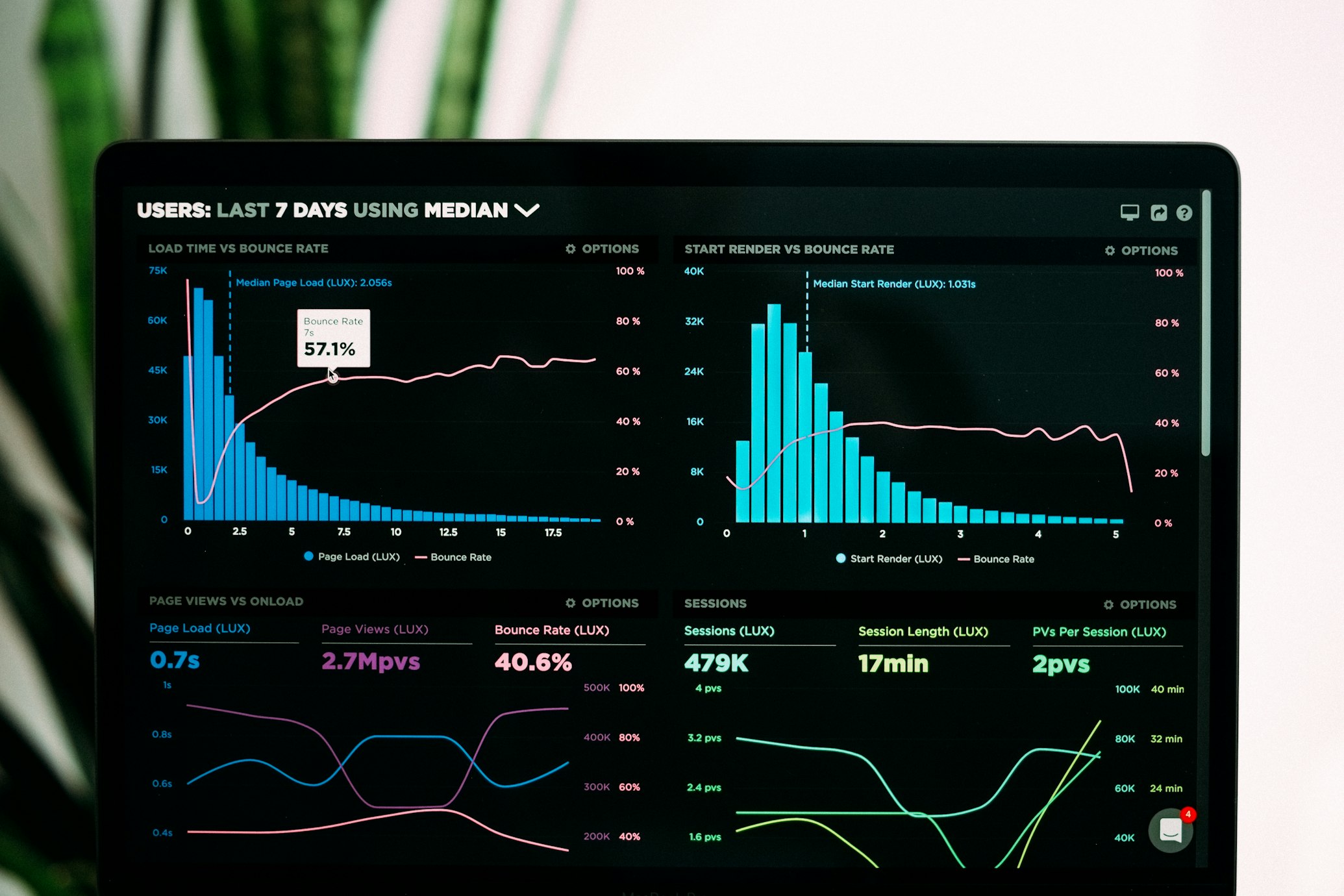The M&A Metamorphosis
How Corporate Giants Are Remaking Themselves in an Age of AI and Uncertainty
Article Navigation
Introduction: The Dealmaking Paradox

In the high-stakes world of corporate strategy, mergers and acquisitions have become the ultimate lever for transformation—even as economic uncertainty reaches fever pitch.
While global M&A volumes dropped 9% in early 2025 compared to 2024, deal values surged by 15%, with jaw-dropping megadeals like Union Pacific's $85 billion merger with Norfolk Southern rewriting industry playbooks 1 2 .
This paradox—caution paired with audacious bets—reveals how corporations are navigating a landscape reshaped by artificial intelligence, geopolitical volatility, and a regulatory pendulum swing.
Section 1: The New Anatomy of a Deal
1.1 The Value vs. Volume Dichotomy
The raw numbers tell a compelling story:
Megadeal Dominance
24 transactions exceeded $10 billion in H1 2025—matching 2024's full-year pace 6 .
Sector Shifts
Industrials (+62%) and energy (+54%) saw explosive growth, while materials and consumer sectors contracted by ~50% 6 .
Private Equity
Sponsors deployed record capital in tech and infrastructure, exemplified by Blackstone's $5.65B Safe Harbor Marinas buy 4 .
Table 1: 2025's Defining Megadeals
| Acquirer | Target | Value | Strategic Driver |
|---|---|---|---|
| Union Pacific | Norfolk Southern | $85B | Rail network consolidation |
| Wiz | $32B | Cloud/AI security integration | |
| Sycamore Partners | Walgreens Boots | $23.7B | Healthcare retail optimization |
| Palo Alto Networks | CyberArk | $25B | Identity security platform expansion |
| SoftBank | Ampere Computing | $6.5B | Arm-based server market control |
1.2 AI: The Invisible Hand Reshaping M&A
No longer just a tech sector phenomenon, AI has become the sine qua non of deal rationale:
- Capability acquisitions: 63% of billion-dollar tech deals focused on "scope expansion" (e.g., Google/Wiz for cloud security AI), not scale 7 .
- Infrastructure wars: CoreWeave's $9B purchase of Core Scientific secured 1.3 gigawatts of power for AI data centers—a currency as valuable as cash 7 .
- Regulatory tightropes: Meta's $14.3B "acqui-hire" of Scale AI tested antitrust boundaries in talent-driven transactions 7 .
AI's growing influence in M&A decisions
1.3 The Geopolitical Chessboard
Supply Chain Armor
Toyota's $46.6B buyout of supplier Toyota Industries epitomized vertical integration for resilience 6 .
Sentiment Divergence
North American deals surged 23% on deregulation hopes, while Asia-Pacific deals collapsed 43% amid trade tensions 6 .
Section 2: The Google-Wiz Experiment – A Case Study in AI-Era M&A
Methodology: The Three-Phase Engine
Problem: Google Cloud trailed in AI security as enterprises balked at LLM vulnerabilities.
Hypothesis: Wiz's agentic AI could scan cloud configurations in real-time, reducing breach risks by 70% (per Palo Alto Networks benchmarks) 7 .
Control Group: Compared organic development costs ($19B/5 years) vs. acquisition premium.
Tech Stack Fusion: Wiz's graph database merged with Google's Vertex AI within sandbox environment.
Talent Retention: 87% of Wiz engineers received 3-year lock-ins via stock/autonomy guarantees.
Table 2: Deal Performance Metrics at 90 Days
| Metric | Pre-Deal | Post-Deal | Change |
|---|---|---|---|
| Google Cloud security revenue | $3.2B/yr | $4.1B/yr | +28% |
| Enterprise contract wins | 12 (Fortune 500) | 31 (Fortune 500) | +158% |
| Critical vulnerabilities detected | 41/month | 219/month | +434% |
Results and Analysis
The transaction became a template for "scope-driven" success. By avoiding traditional scale synergies, Google sidestepped antitrust landmines while achieving:
Section 3: The Scientist's M&A Toolkit
Success in modern deals requires specialized "reagents":
Table 3: Essential M&A Research Reagent Solutions
| Tool | Function | 2025 Innovation |
|---|---|---|
| Scenario Matrix | Models tariff/rate impacts | BCG's 5-archetype framework (e.g., JVs for tariff circumvention) 6 |
| Earn-Out Structures | Bridges valuation gaps | AI-powered EBITDA adjustors based on real-time market data |
| Continuation Funds | Solves PE exit gridlock | Secondary vehicles holding 47% of aging assets 2 |
| Agentic Due Diligence | Accelerates target screening | LLMs analyzing 10-Ks/patents for capability alignment |
| CFIUS Firewalls | Manages national security risks | "Clean team" protocols for sensitive tech 5 |
| 5-Bromo-PAPS | 679787-08-7 | C17H19BrN4Na2O4S |
| Peptide C20W | 123045-86-3 | C113H190N38O26 |
| Acetamide-d5 | 33675-83-1 | C2H5NO |
| HYDROQUININE | 522-66-7 | C20H26N2O2 |
| 2,3,4-Tafagg | 115921-25-0 | C36H50BrNO22 |
Toolkit Visualization
Key Insight
"The most successful acquirers in 2025 aren't just using one tool—they're combining scenario planning with AI-driven due diligence to identify targets that traditional methods would miss."
This integrated approach explains why firms using 3+ tools from this toolkit saw 32% higher post-merger performance 6 .
Section 4: The Future – Bold Moves in a Fragmented World
As PwC's Brian Levy notes, today's environment demands that leaders "focus on thematics and drive analysis deeper than ever" 2 .
1. Embrace Asymmetry
Serial acquirers generate 2x more value in uncertainty by targeting "undervalued disruptors" like AI infrastructure plays 6 .
2. Regulatory Arbitrage
With U.S. antitrust enforcement softening under new leadership, in-sector consolidation (e.g., bank mergers) will surge 5 .
CFIUS Quadrants for AI Deals
Green
Cloud tools (e.g., Moveworks)
Amber
Data labeling (e.g., Scale AI)
Red
Military-relevant algorithms
Black
Quantum computing
Conclusion: The Darwinian Deal
The M&A landscape of 2025 resembles a biological arms race: organisms (corporations) adapting via strategic gene splicing (acquisitions). As capital migrates toward AI-native capabilities and regional strongholds, the playing field fractures—yet opportunities abound for those wielding the new toolkit.
With $59 trillion in global debt weighing on growth 2 , deals aren't mere luxuries; they're existential maneuvers. The metamorphosis won't be graceful, but as Google's Wiz coup proves, the winners will rewrite their destinies one calculated transaction at a time.

